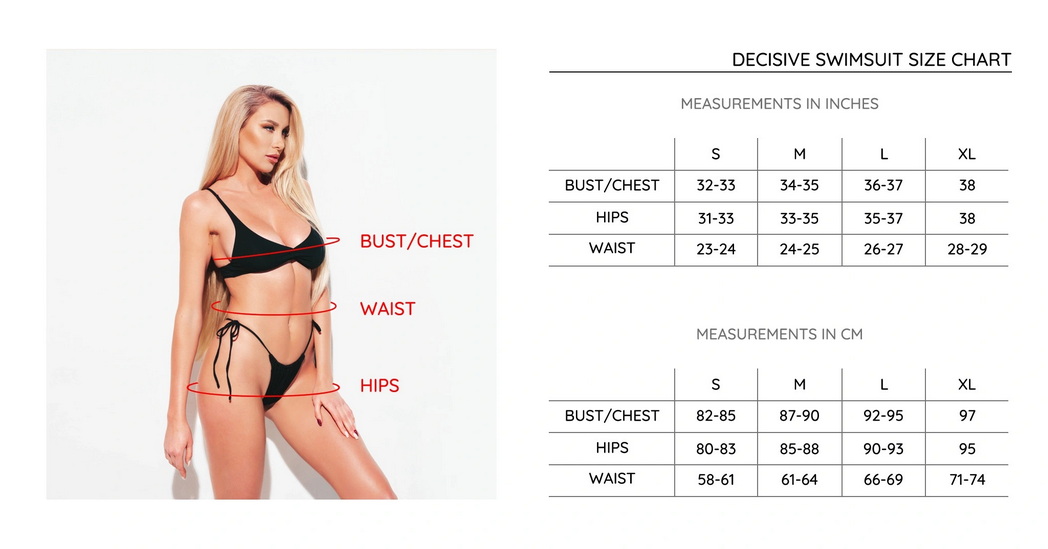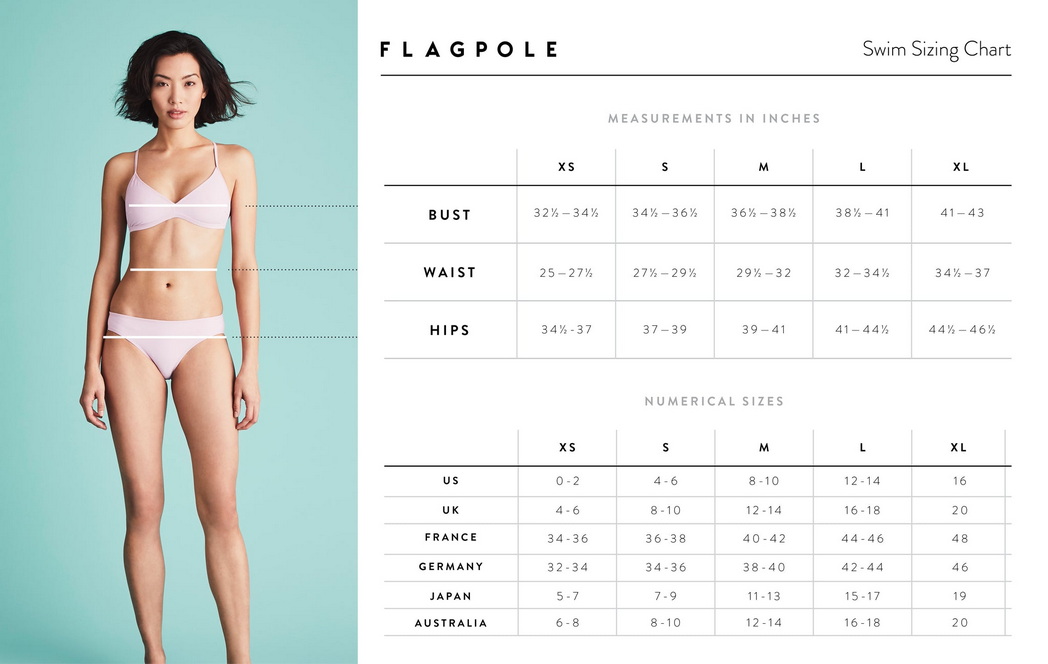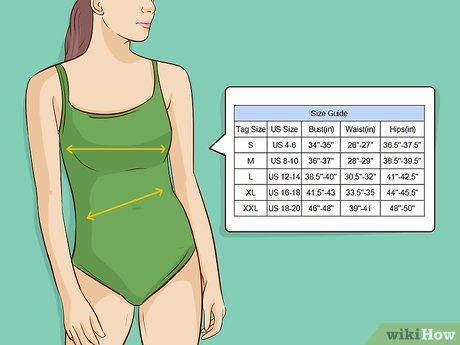Content Menu
● Understanding Swimsuit Sizing
● Taking Accurate Measurements
● Using Size Charts
● Understanding Different Swimsuit Styles
● Considering Fabric and Stretch
● Trying On Swimsuits
● Special Considerations
● Online Shopping Tips
● Maintaining Your Swimsuit's Fit
● Conclusion
Finding the perfect swimsuit can be a daunting task, especially when it comes to determining the right size. Whether you're planning a beach vacation, joining a swim team, or simply enjoying a day by the pool, knowing your correct swimsuit size is crucial for both comfort and confidence. In this comprehensive guide, we'll explore various methods and considerations to help you find your ideal swimsuit size, ensuring you look and feel your best while enjoying water activities.
Understanding Swimsuit Sizing
Swimsuit sizing can be tricky, as it often differs from regular clothing sizes. Unlike everyday wear, swimsuits are designed to fit snugly against your body, providing support and minimizing drag in the water. This means that your swimsuit size might not necessarily match your usual dress or pants size. Additionally, sizing can vary between brands and styles, making it even more challenging to find the perfect fit.

To complicate matters further, swimsuit sizes are often labeled differently across various countries and regions. For example, what might be considered a "Medium" in one country could be labeled as a "Large" in another. This inconsistency in sizing standards can lead to confusion and frustration when shopping for swimwear, especially online.
Taking Accurate Measurements
The first step in determining your swimsuit size is to take accurate measurements of your body. This process is crucial, as it provides the foundation for finding a well-fitting swimsuit. To get started, you'll need a flexible measuring tape and, ideally, a friend to help you ensure accuracy.
1. Bust Measurement: Begin by measuring your bust. Wrap the measuring tape around the fullest part of your chest, typically across the nipples. Make sure the tape is snug but not too tight, and keep it parallel to the ground. Take a deep breath and exhale before noting the measurement. This will give you your bust size, which is particularly important for selecting the right top in a two-piece swimsuit or ensuring proper fit in a one-piece.
2. Waist Measurement: Next, measure your waist. Locate the narrowest part of your torso, usually about an inch above your belly button. Wrap the measuring tape around this area, again keeping it snug but not constricting. This measurement is crucial for determining the fit of high-waisted bikini bottoms or one-piece swimsuits with defined waistlines.
3. Hip Measurement: For the hip measurement, wrap the tape around the fullest part of your hips and buttocks. This is typically about 7-9 inches below your natural waistline. Ensure the tape is level all the way around your body. This measurement is essential for choosing the right size of bikini bottoms or determining how a one-piece will fit around your lower body.

4. Torso Length: For one-piece swimsuits, it's also helpful to measure your torso length. Start at the top of your shoulder, run the tape down the front of your body, through your legs, and up your back to meet the starting point. This measurement ensures that one-piece suits will fit properly without pulling or sagging.
Using Size Charts
Once you have your measurements, the next step is to consult size charts. Most reputable swimwear brands provide detailed size charts on their websites or product pages. These charts typically list measurements for bust, waist, and hips, corresponding to their specific sizes (e.g., Small, Medium, Large, or numerical sizes like 6, 8, 10).
When using size charts, compare your measurements to those listed. If your measurements fall between two sizes, it's generally recommended to choose the larger size for a more comfortable fit. Remember that swimwear is designed to be form-fitting, so a slight snugness is normal and helps the suit stay in place while swimming.

It's important to note that size charts can vary between brands, so always refer to the specific chart for the brand you're considering. Some brands may also offer different fits within their range, such as "relaxed fit" or "compression fit," which can affect how the swimsuit sizes run.
Understanding Different Swimsuit Styles
The style of swimsuit you choose can also impact sizing. Different styles are designed to fit and flatter various body types, and understanding these can help you select not only the right size but also the most flattering cut for your figure.
1. One-Piece Swimsuits: One-piece swimsuits offer full coverage and can be a great option for many body types. When sizing a one-piece, pay particular attention to torso length. A suit that's too short can cause discomfort and pulling, while one that's too long may sag or bunch up. Look for styles with adjustable straps to help fine-tune the fit.
2. Bikinis: For two-piece swimsuits, you have the advantage of being able to mix and match top and bottom sizes. This is particularly helpful if your bust and hip measurements correspond to different sizes. When choosing a bikini top, consider both band size and cup size, similar to how you would select a bra.
3. Tankinis: Tankinis combine the coverage of a one-piece with the flexibility of a two-piece. When sizing a tankini, focus on the fit of the top around your bust and torso, and select bottoms based on your hip measurement.
4. High-Waisted Bottoms: High-waisted styles sit at or above the natural waistline. When choosing these, your waist measurement becomes particularly important. Ensure the waistband sits comfortably without digging in or rolling down.

Considering Fabric and Stretch
The material of your swimsuit plays a significant role in how it fits and feels. Most modern swimwear is made with a blend of fabrics that offer stretch and recovery, allowing the suit to hug your curves while maintaining its shape.
1. Nylon and Spandex Blends: These are common in swimwear and offer excellent stretch and quick-drying properties. Suits with a higher percentage of spandex will have more give and may feel more forgiving in fit.
2. Polyester Blends: Polyester swimsuits are known for their durability and chlorine resistance. They may have less stretch than nylon blends, so sizing becomes even more critical.
3. Compression Fabrics: Some performance swimwear uses compression fabrics, which are designed to fit very snugly. These suits may feel tight at first but are intended to reduce drag in the water.
When considering fabric, keep in mind that some materials may loosen slightly when wet. If you're between sizes, this could influence your decision to size up or down.
Trying On Swimsuits
While online shopping offers convenience, there's no substitute for trying on swimsuits in person when possible. When you try on a swimsuit, move around, stretch, and simulate swimming motions to ensure the suit stays in place and feels comfortable.
Check for these signs of a good fit:
◆ The suit should feel snug but not restrictive.
◆ There should be no gaping or sagging in the bust area.
◆ The leg openings should lie flat against your skin without digging in.
◆ The suit shouldn't ride up or shift significantly when you move.
◆ For two-piece suits, the band of the top should sit flat against your ribcage without riding up.
Remember that swimsuits often feel tighter when dry, so don't be discouraged if a suit feels very snug in the fitting room. Many swimsuits are designed to loosen slightly when wet.

Special Considerations
1. Athletic Swimwear: If you're shopping for competitive or lap swimming, you may need to consider specialized sizing. Racing suits, for example, are often sized differently and are designed to fit extremely snugly to reduce drag in the water.
2. Maternity Swimwear: Expectant mothers should look for swimsuits with extra room in the bust and belly areas. Many maternity swimsuits are sized according to pre-pregnancy measurements, with built-in stretch to accommodate a growing bump.
3. Plus-Size Swimwear: Many brands now offer extensive plus-size ranges with specialized fits. Look for brands that use models with diverse body types to get a better idea of how the swimsuit might look on you.
4. Post-Mastectomy Swimwear: There are swimsuits designed specifically for women who have undergone mastectomy surgery. These often include pockets for prosthetics and may have higher necklines or armholes for additional coverage and support.
5. Children's Swimwear: When sizing swimsuits for children, it's important to consider growth. Many parents choose to size up slightly to allow room for growth throughout the season. However, ensure the suit isn't so large that it compromises safety in the water.
Online Shopping Tips
If you're shopping for swimwear online, there are several strategies you can use to increase your chances of finding the right size:
1. Read Customer Reviews: Other shoppers often comment on sizing in their reviews. Look for reviews from people with similar body types or measurements to yours.
2. Check Return Policies: Ensure the retailer has a good return or exchange policy in case the size isn't right.
3. Use Virtual Fitting Tools: Some online retailers offer virtual fitting rooms or size recommendation tools based on your measurements and preferences.
4. Order Multiple Sizes: If possible, order the size you think you need along with one size up and down. This allows you to compare fits and choose the best one.
5. Look for Detailed Product Descriptions: Pay attention to any notes about how the suit fits (e.g., "runs small" or "very stretchy").
Maintaining Your Swimsuit's Fit
Once you've found the perfect fitting swimsuit, proper care can help maintain its shape and size. Always rinse your swimsuit in cool, fresh water after use, especially if you've been in chlorinated pools or saltwater. Avoid wringing out your suit; instead, gently squeeze out excess water and lay it flat to dry away from direct sunlight.
When washing your swimsuit, use a mild detergent and hand wash in cool water. Avoid using a washing machine or dryer, as these can damage the fabric and alter the fit over time. By taking good care of your swimsuit, you can ensure it maintains its perfect fit for many swimming seasons to come.
Conclusion
Finding the right swimsuit size involves a combination of accurate measurements, understanding your body type, and considering the specific style and brand of swimwear. By taking the time to measure yourself correctly and using size charts as a guide, you can significantly increase your chances of finding a swimsuit that fits perfectly and makes you feel confident.
Remember that bodies come in all shapes and sizes, and the most important aspect of choosing a swimsuit is finding one that makes you feel comfortable and confident. Don't be discouraged if you need to try on several sizes or styles before finding the perfect fit. With patience and persistence, you'll find a swimsuit that not only fits well but also allows you to enjoy your time in the water to the fullest.
Whether you're lounging by the pool, surfing the waves, or competing in a swim meet, the right-sized swimsuit can make all the difference in your comfort and performance. So take the time to find your perfect fit, and get ready to make a splash in style!






































